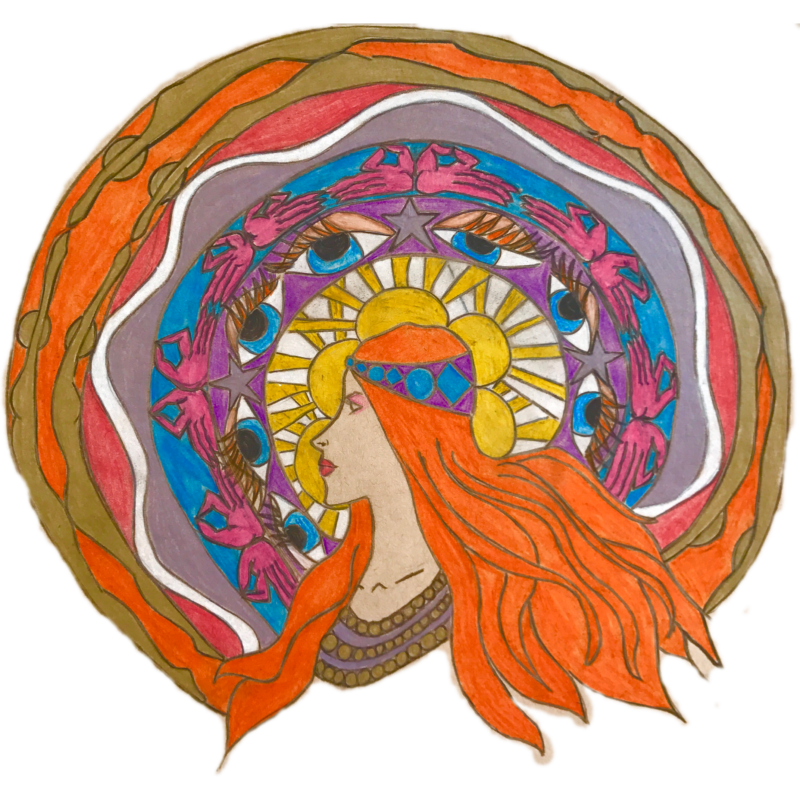Yoga begins for many as a physical pursuit that often ends up penetrating deeper layers of the self. This brings about a heightened awareness and states of deep peace and bliss. What was once unfamiliar about the body and mind becomes known through breath and conscious movement. From the periphery to our core, the techniques of hatha yoga guide us through the layers of self toward the pure light within. According to yoga philosophy, these layers are called the koshas. Whether taken literally or metaphorically, the koshas give context to the idea that yoga takes you “deeper,” and defines the different realms we on the way to our center. Philosophical concepts such as this are great to keep in mind when doing online yoga videos or anytime you’re practicing.

The Five Koshas are From our Outermost (Annamaya Kosha) to the Innermost Layer (Anandamaya Kosha):
Physical – Annamaya Kosha
The annamaya kosha represents the gross body including the skin, muscles and bones. If we take good care of our body, we enjoy life more and move beyond the physical in our meditations. We become strong and flexible and can sit comfortably for long periods of time. A healthy body will also ensure that we enjoy our lives, doing the activities we love, having enough energy to keep up with our small children or put time into our favorite creative outlet. Nurturing this outermost layer of the self has far reaching benefits to both our internal and external worlds.
Energy – Pranamaya Kosha
The pranamaya kosha refers to our energetic body. Prana is the life force that enlivens the entire universe and flows through each and every being within it. Yogis believe that we have energetic channels running through our bodies where the prana flows. Just like we want to promote blood flow through our circulatory system, we also want to promote the free flow of prana through these energetic channels (called Nadis). This is essentially the purpose of pranayama, to regulate and optimize this circulation. When this happens, the pranamaya kosha is no longer an obstacle and we are able to move through it to our deeper layers when meditating. A daily pranayama practice takes a regular asana practice up a notch. The high that we experience from a sweaty Vinyasa class is catapulted into a new realm when we add breath work.
Mental – Manamaya Kosha
The manamaya kosha is where we process our thoughts and emotions. Mana means mind. Our thoughts are constant and narrate our lives all day long. When practicing yoga, whether it be in a class or your daily meditation, it is in this layer that we take a step back and pay attention to the thoughts in order to observe them. Most of us will find that we are telling the same story over and over again. This awareness allows us to transcend the ongoing cycle of judgments and assumptions that we make about ourselves and the people around us. Once we understand that “we are not our thoughts” and rise out of the illusions we create, we can move deeper into more subtle layers.
Wisdom – Vijanamaya Kosha
The vijanamaya kosha is beyond our thoughts and emotions where our intuition and intellect reside. We experience this layer when we are present and are able to easily tune out the random thoughts that are constantly swirling around in our heads. We are simply aware. There is a freedom that comes with experiencing this layer and knowing that this state exists. We are able to find peace and contentment within and no longer rely on the external world to find happiness. We won’t necessarily live in this layer all the time, but we will find that the daily drama that used to drag us down is now much easier to let go of. However difficult our current situation in life is, through yoga and meditation we can reside in this newfound place and view our lives from a more enlightened perspective.
Bliss – Anandamaya Kosha
This is the closest layer to our truest selves, the Atman, or eternal center of consciousness. It is here we experience a feeling of bliss that is far beyond the body and mind. It is not the emotion of bliss we might associate with earthly and sensory exploits such as the feeling after a great yoga class, meal, or massage. It is when we are fully immersed in what we are doing and there is no separation from the experience. There is no “I” am experiencing “this.” We are so deep that no outside circumstance can pull us out. Anandamaya cannot be strived for. The moment you “try” to get there, it’s gone. It’s a spontaneous occurrence where we are steeped completely in just being.
Studying the koshas greatly enriches our yoga and meditation practice. Viewing ourselves as layers of consciousness that get more subtle as we go deeper remind us that our practice is moving us toward a state of bliss, of anandamaya. This order of attention is not taken into consideration in western culture. We see psychiatrists and psychologists for our mind, we do physical activity for our bodies and there is essentially no focus on attending to the flow of energy, or prana, much less a notion of ourselves as divine consciousness. We divide ourselves into parts and forget about the whole and it’s interconnectedness. Approaching our lives from the perspective of being made up of sheaths could bring about the shift that many are seeking. Remember this when meditating or doing yoga at home, in a studio or taking online yoga videos.

Leave a Reply
You must be logged in to post a comment.